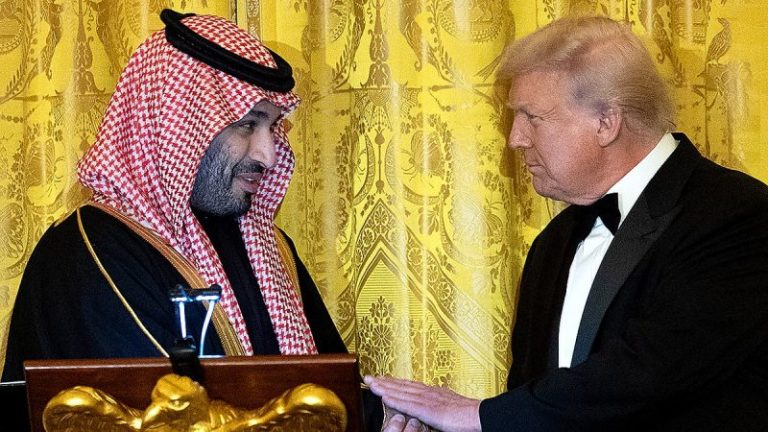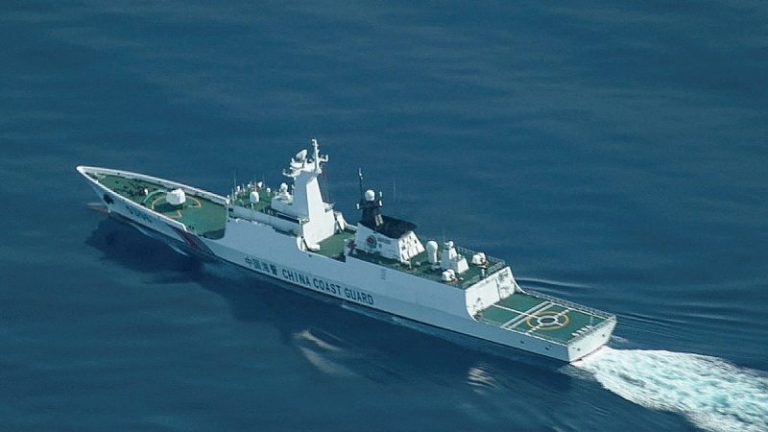President Donald Trump on Tuesday announced that the U.S. will designate Saudi Arabia a major non-NATO ally, unveiling a defense and economic partnership with Crown Prince Mohammed bin Salman during a White House dinner marking 80 years of U.S.–Saudi relations.
Trump welcomed guests at the official dinner and thanked bin Salman for his visit and investment in the U.S. The crown prince gave brief remarks, thanking Trump and expressing his gratitude while saying he was looking forward to a continued partnership between the U.S. and Saudi Arabia.
Before announcing the new designation, Trump reflected on the nations’ long relationship, recalling a 1945 meeting between President Franklin Delano Roosevelt and King Abdul Aziz.
‘It’s a special privilege to welcome his royal highness to Washington this year, as we mark the 80th anniversary of the first meeting between [a] U.S. President and a Saudi king,’ Trump said. ‘The two became immediate and warm friends … and right now you have the best friend you’ve ever had.’
He added that ever since the U.S. and Saudi Arabia have been ‘enduring partners,’ they were ‘making that partnership closer and stronger than ever before’ Tuesday night.
Trump said the partnership reached a new level after a day of meetings and signings with bin Salman. He praised Saudi Arabia’s modernization, calling it ‘an economic engine and a modern-day miracle,’ and said new agreements in energy, minerals and artificial intelligence were ‘unprecedented.’
He added that Saudi Arabia had agreed to boost its investment in the U.S. from $600 billion to $1 trillion, a move he said would create American jobs and further strengthen the growing alliance.
‘So, that’s why tonight I’m pleased to announce that we’re taking our military cooperation to even greater heights by formally designating Saudi Arabia as a major non-NATO ally, which is something that is very important to them,’ Trump said.
He added that both countries had just signed ‘a historic strategic defense agreement,’ calling it proof of ‘a stronger and more capable alliance’ that would serve ‘the highest interest of peace.’
The announcement followed Trump saying Saudi Arabia would invest $1 trillion in the U.S., doubling an earlier pledge.
‘He said, ‘I am going to up that to $1 trillion,” Trump told the audience. ‘So, he’s investing $1 trillion into the United States … and now you have the hottest country anywhere in the world.’
Trump also pointed to what he called the largest arms purchase in history — $142 billion in American military equipment and services — and said the move ‘will mark and make both of our nations safer and cement the kingdom’s role as a key force for stability and security in the Middle East.’
The president said the new defense pact would make both nations safer and referenced a recent U.S. military operation using B-2 bombers against what he described as an Iranian nuclear threat.
‘Saudi Arabia has never been as safe as it is right now,’ he said. ‘You always had a little cloud over your head. … That cloud is not there anymore.’
After the announcement, Trump tied the agreement to his broader Middle East peace agenda, citing the end of the war in Gaza, the return of hostages and a U.N. resolution endorsing his ‘Board of Peace’ initiative.
‘This is a board like no other,’ he said. ‘It will have the heads of major countries … and I was honored to be chosen the chair.’
Bin Salman thanked Trump for the ‘warm and great welcome,’ calling the day ‘special’ and emphasizing the growing economic relationship between the two countries.
The crown prince also said he believed this is a huge opportunity and vowed to remain focused on implementing and increasing opportunities between both countries.
Trump closed by saying the alliance marked the strongest moment in U.S.–Saudi relations since Roosevelt’s meeting with King Abdul Aziz.
‘Someday, maybe we’ll talk about us as being two wonderful men,’ he said. ‘Forget about great — wonderful is OK — but two wonderful men that did tremendous work for their countries.’










